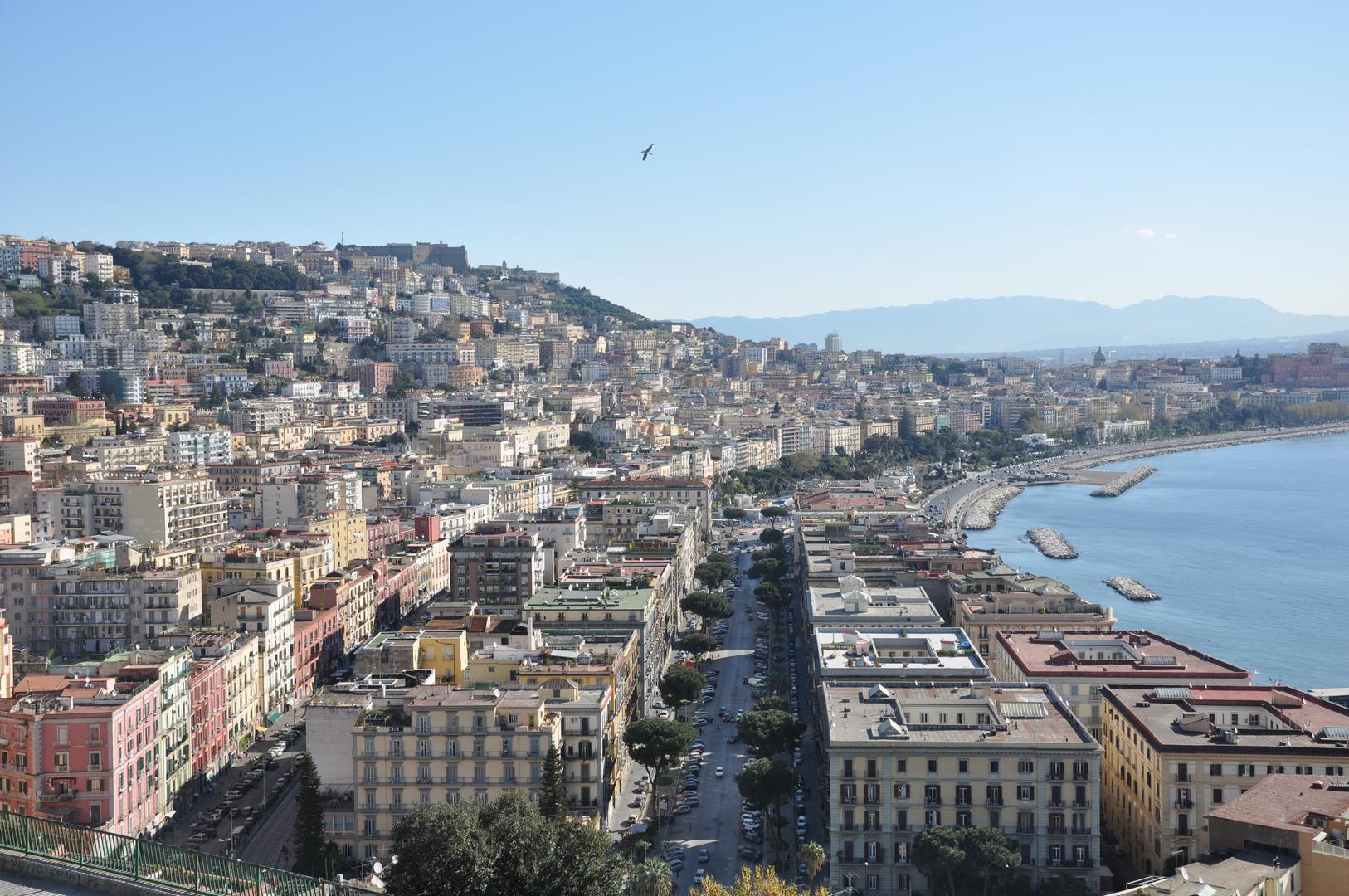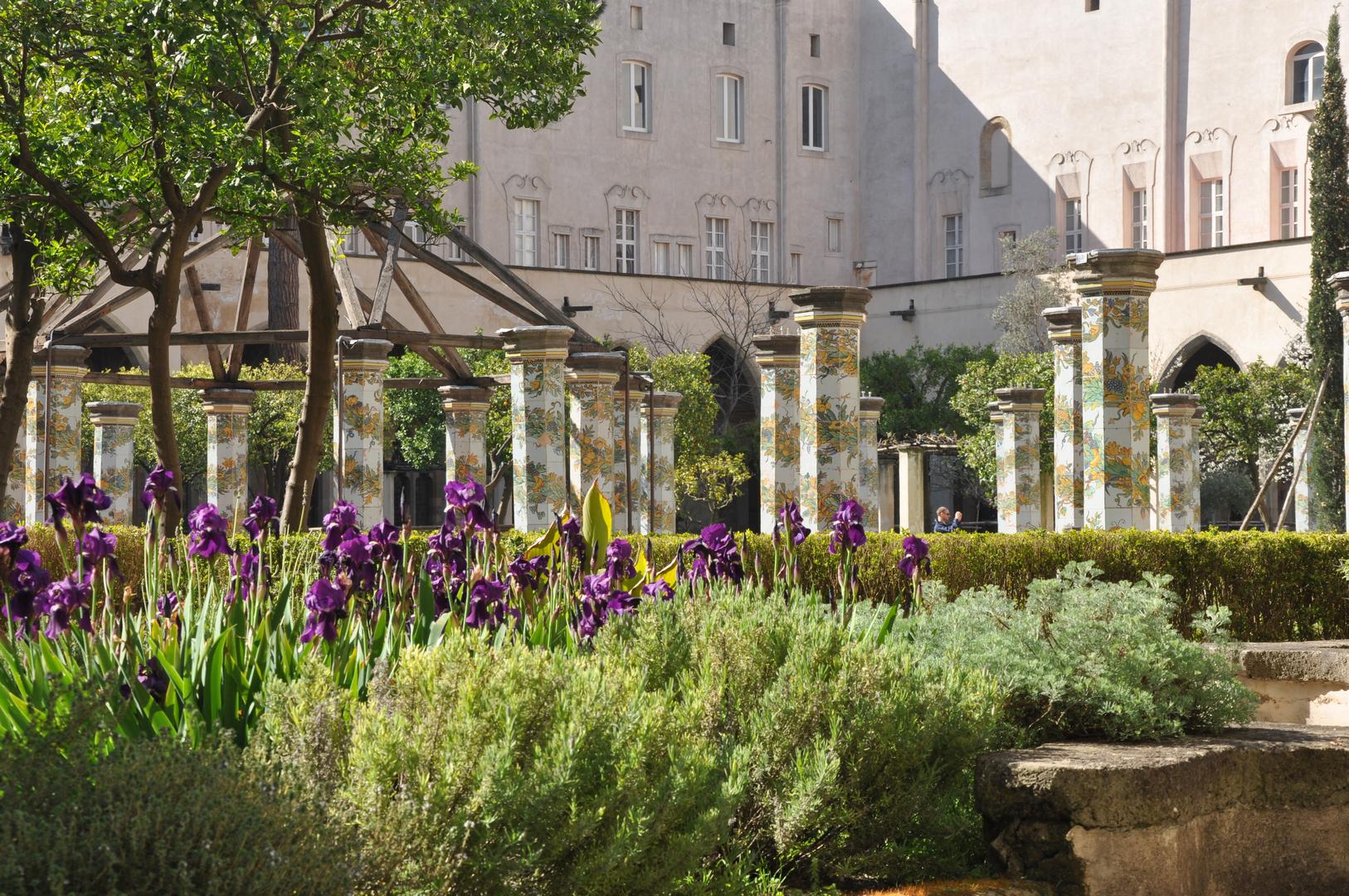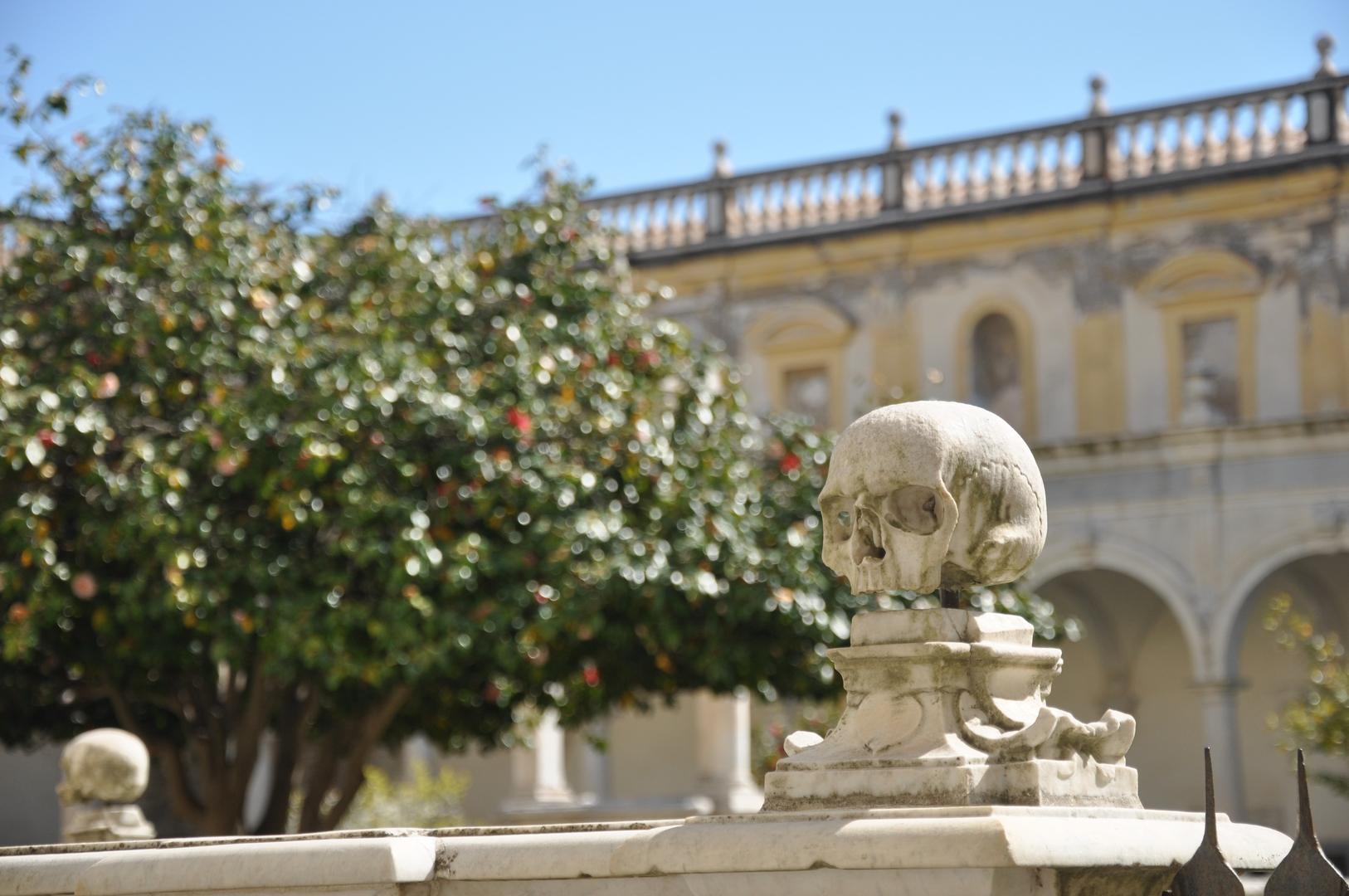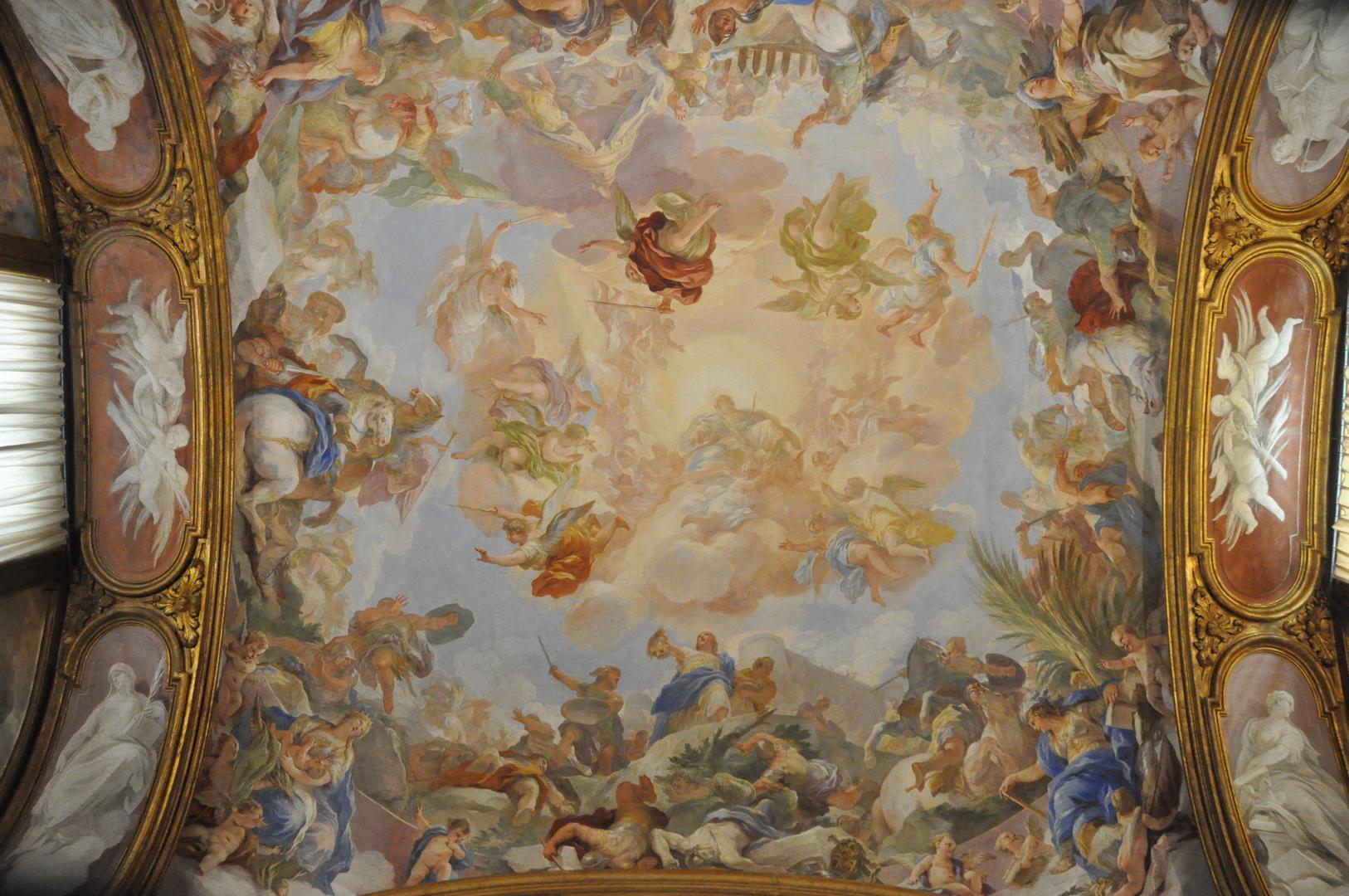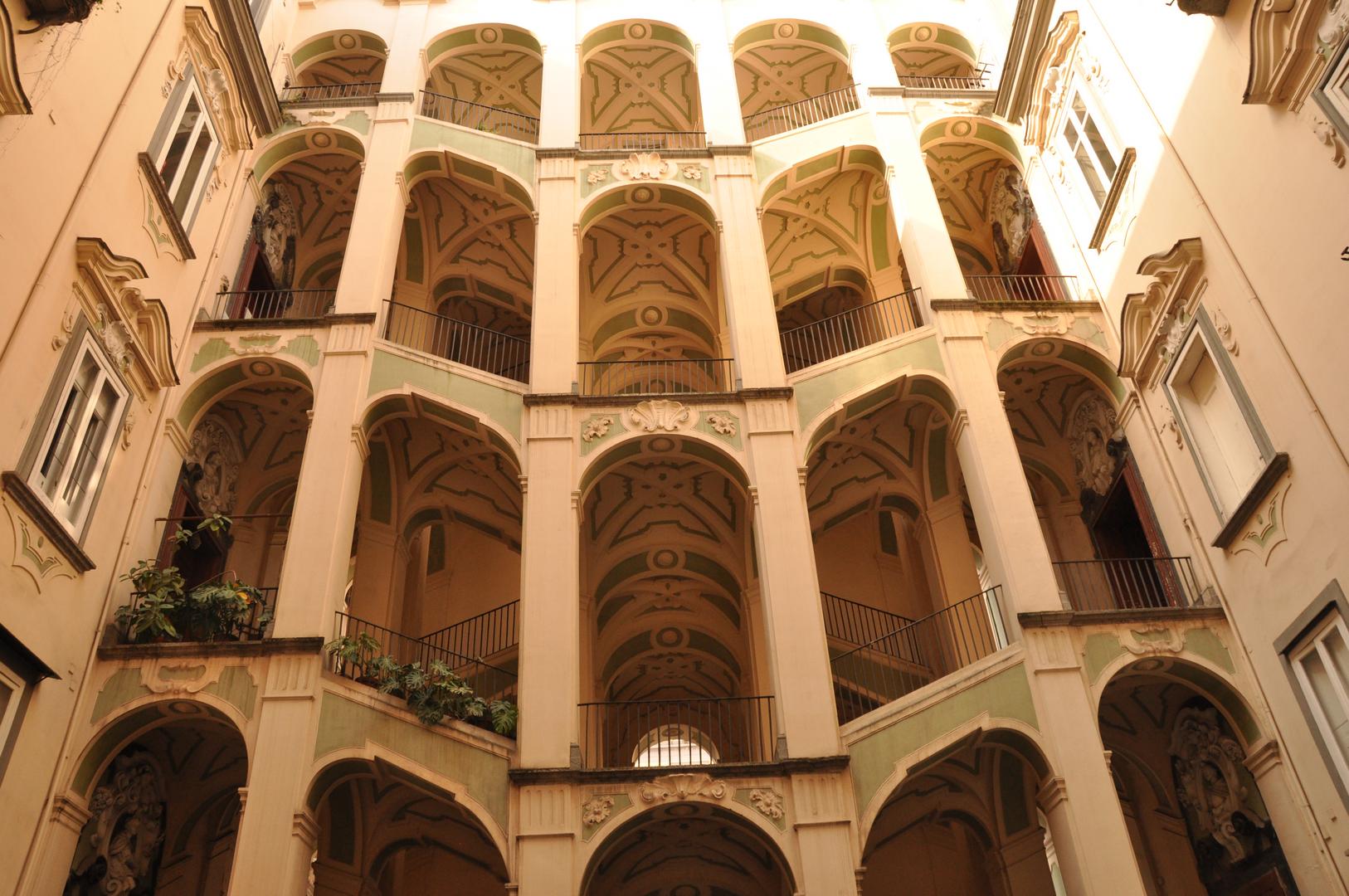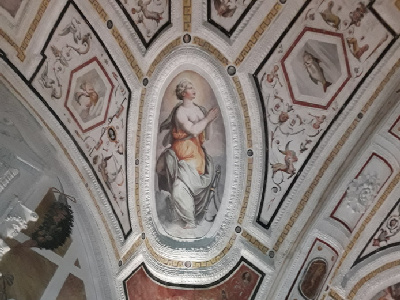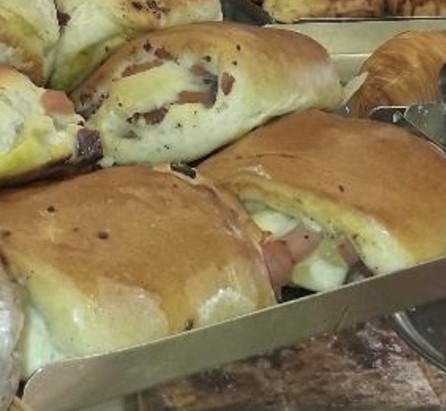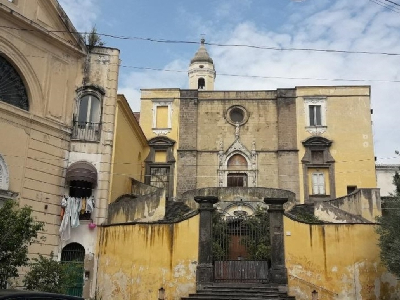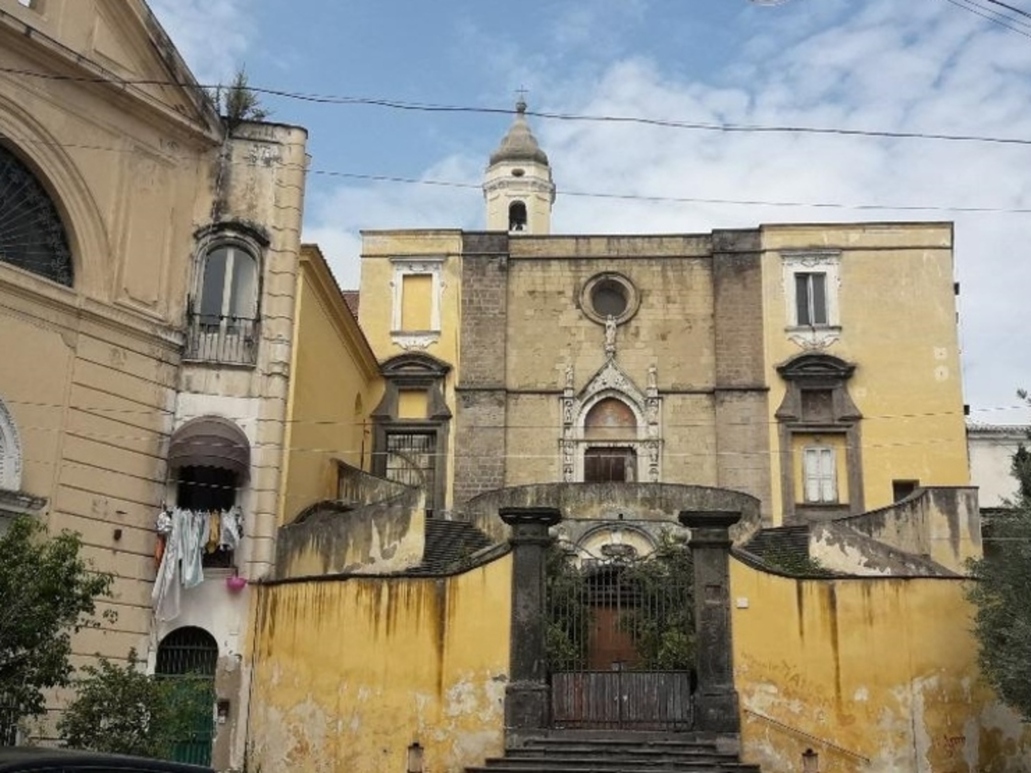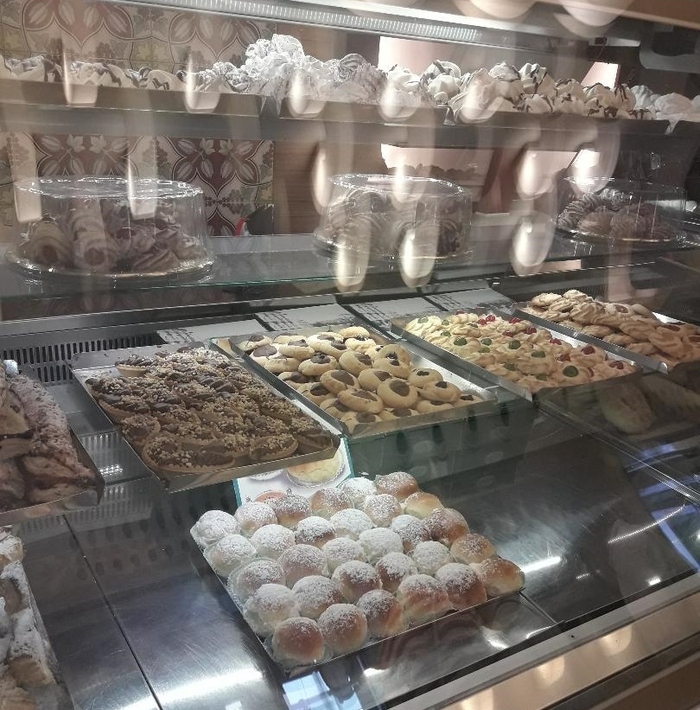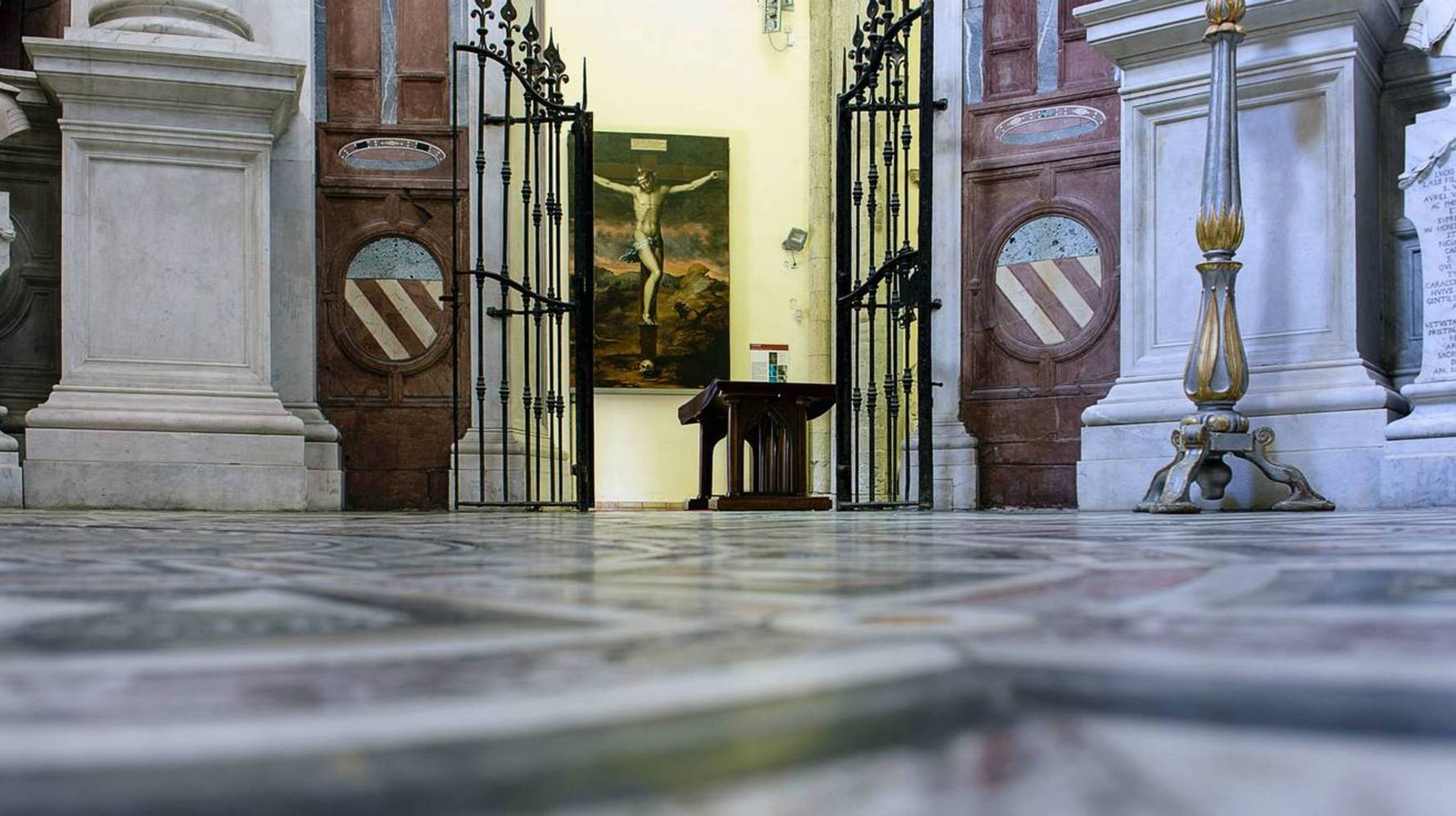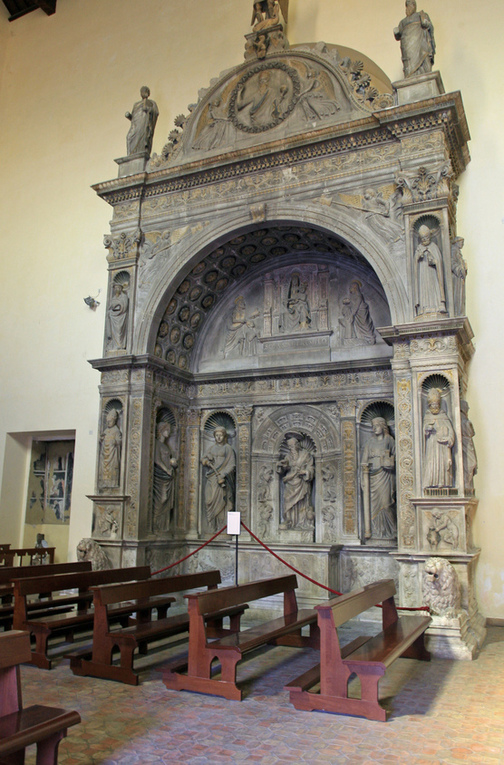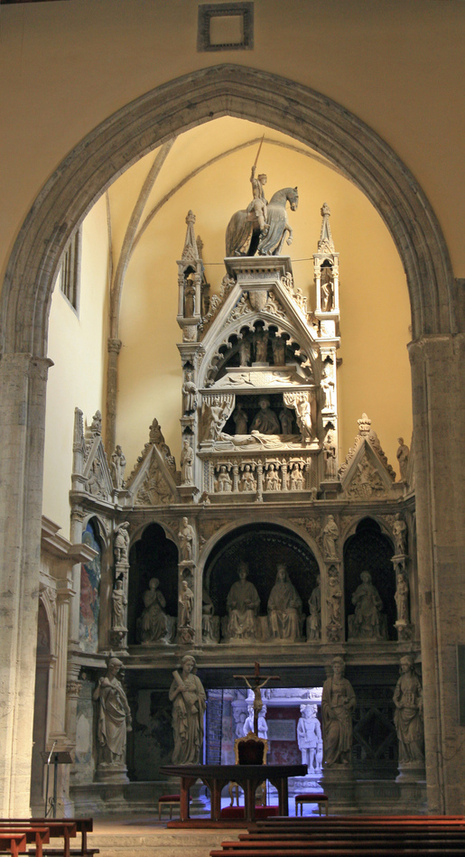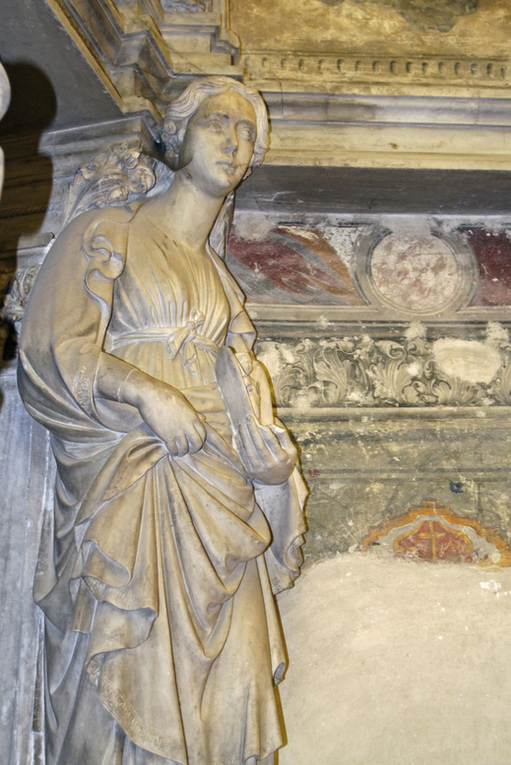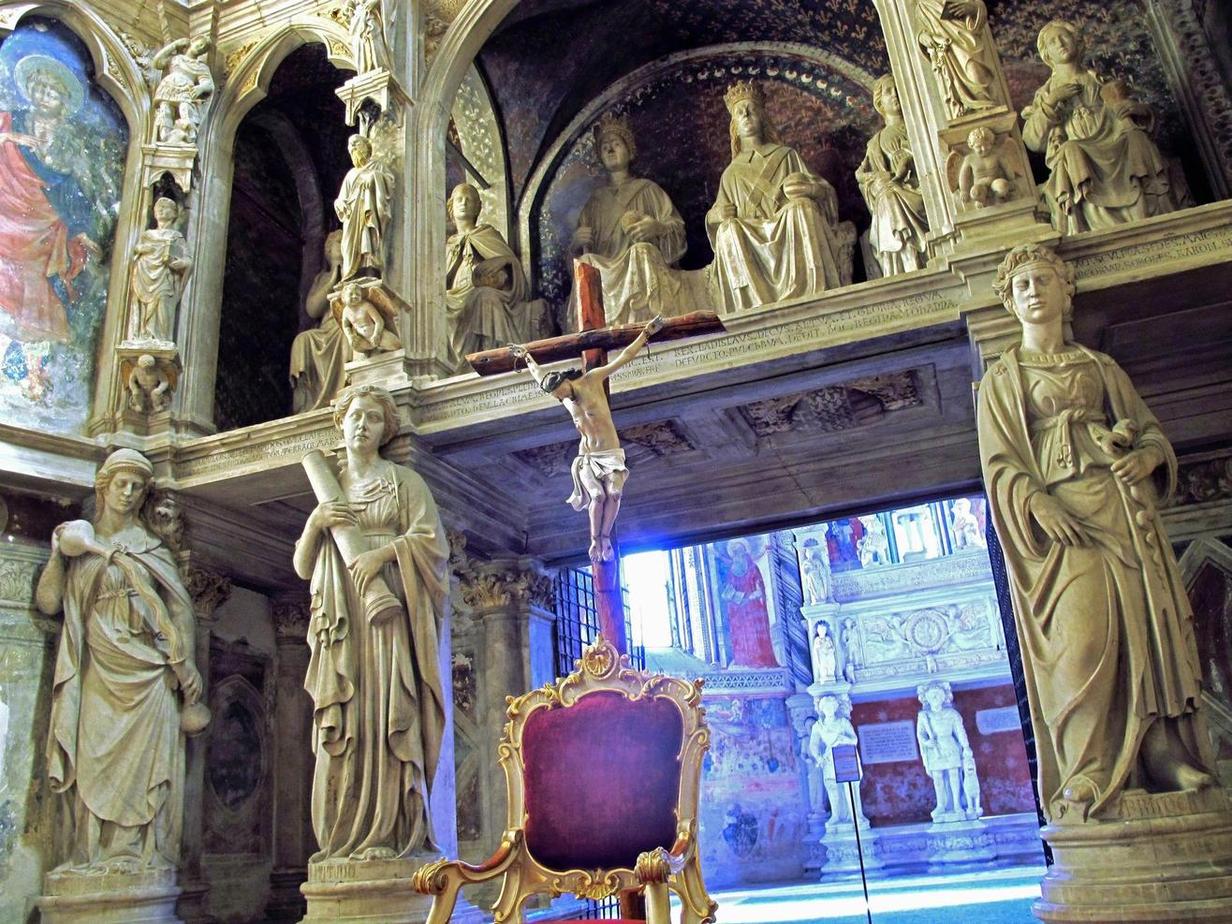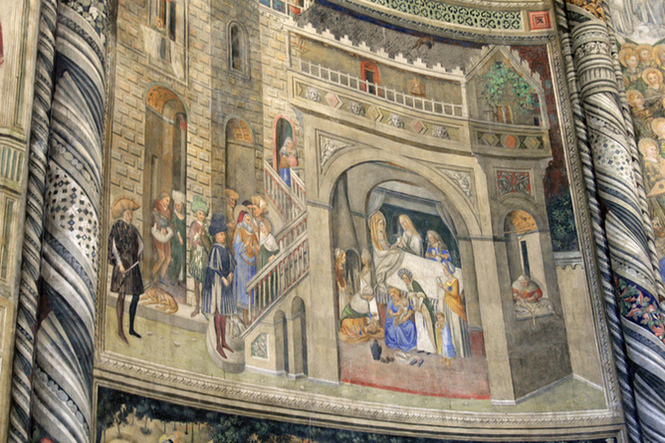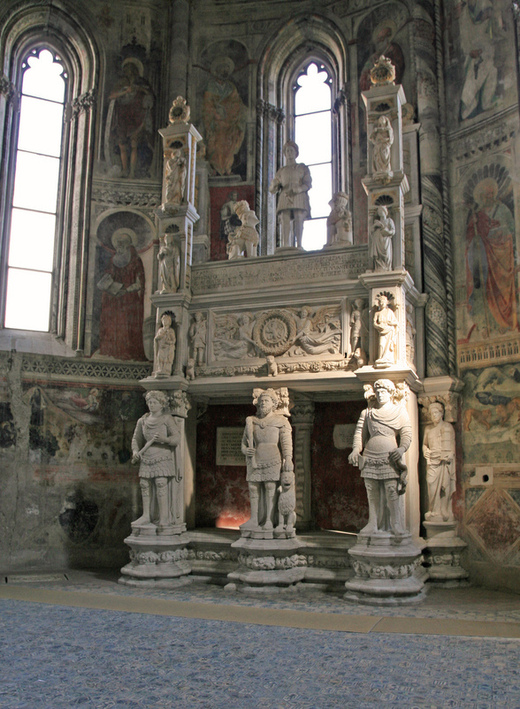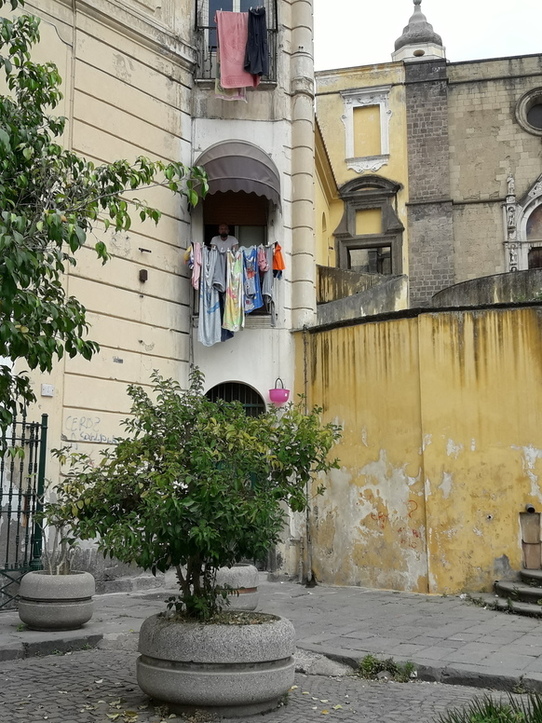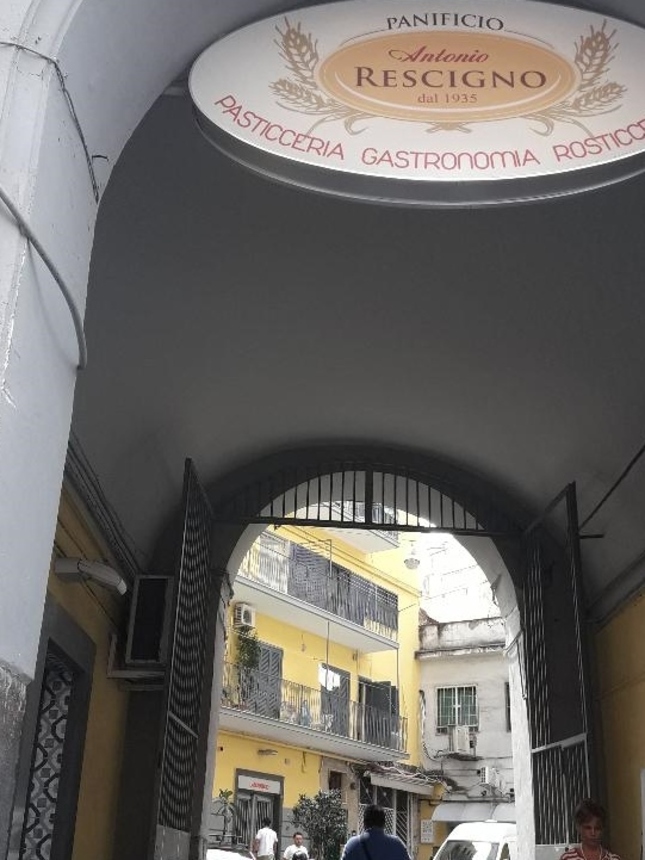Fiorella: Don’t you love that fabulous gem in the heart of Naples, near Piazza Monteoliveto?
Alice: I do! Honestly, I just discovered how amazing this place was last year. I think our readers would love Sant’Anna dei Lombardi as well. Tell us about it!
The church and the monastery of Monteoliveto were founded in 1411 by the Protonotary of King Ladislao of Durazzo. The name was changed into Sant’Anna dei Lombardi, when the Lombardi Confraternity was transferred here at the beginning of the 19th century after their church had been demolished after an earthquake.
This religious complex was beloved by the Aragonese Kings, in particular by King Alfonso II.
Thanks to the relationship the Aragonese had with the Medici and the Estensi families, some talented artists from Tuscany and Emilia worked on this structure.
In 1475 the Florentine Antonio Rossellino was entrusted with the the sepulcher for Maria of Aragon, daughter of King Ferrante and wife of the duke of Amalfi Antonio Piccolomini. The elegant monument was completed by Benedetto da Maiano.
The softly carved Nativity on the altar and the putti with garlands are delicate details one can appreciate in this fabulous Renaissance chapel.
In the 16th century Monteoliveto was enriched with many other masterpieces such as the marble altars by the local artists Girolamo Santacroce and Giovanni da Nola at both sides of the entrance.
To the right of the apse is a room with the fluid frescoes by the Spanish Pedro Rubiales (16th century) and the fabulous and theatrical terracotta group of the Lamentation over the dead Christ by Guido Mazzoni from Modena (1492).
Alice: I always loved the facade and although I had walked by this building so many times, rushing to lessons near Piazza Carità or to meet friends in Piazza del Gesù and it wasn’t until I went to a choir concert here last year that I actually saw the incredible beauty from the inside. Incredible.
Fiorella: Did you see the Sacristy? Once the Refectory, it might possibly be the highlight of the church. Look at the fabulous wooden stalls by the monk Giovanni da Verona with intricate prospectives, musical instruments, animals and lovely small statues brought to life with unusual clothing!
The paintings frescoed in the vault by Giorgio Vasari (in Naples between 1544 and 1545) with virtues, allegories and grotesques dominate the room and you cannot forget it once you take it in.
Alice: Those frescoes are unforgettable.
Fiorella: And before you leave the church, notice the sepulcher on the left hand side of the pronao. Here rests the architect Domenico Fontana who died in 1607. The monument was moved here from the church of Sant’Anna dei Lombardi.
Alice: After spending your time taking in the details of this masterpiece of a church, you might get hungry. Actually, I definitely am.
Fiorella: You fed your eyes so it is time to feed the stomach.
Alice: You are so good to me, Fiorella! But, I am not feeling a sfogliatella today and it is too early for a meal…
Fiorella: If you want a savory snack go for a potato croquette or a panino napoletano (a soft dough with cheese and cured meat) in the pizzeria Giuliano in Calata Trinità Maggiore, only a few minutes from here. And since you love the Neapolitan panino, I can give you the recipe I like.
Alice: Dangerously fabulous. Yes, please.
Fiorella: The recipe is for no more than five panini -to be shared with your friends or family. Don’t go overboard, I know how much you love these and you need to save room for dinner.
Alice: Fabulousness has no limits, Fiorella!
Ingredients for 5 panini napoletani:
20 gr of flour, type “0” or “00”
50 gr water
50 gr milk
6 gr bread yeast
1 spoonful of lard (if you want to go old school-traditional) or butter/margarine/shortening (for a little lighter option)
Salt
10 gr of Parmesan cheese
40 gr of pancetta (or bacon if you can’t find pancetta)
40 gr of ham
80 gr of provolone
Pepper (feel free to put a lot)
Oil
Dissolve the yeast in water and warm (tepid) milk and slowly add the flour.
Lovingly mix the salt, pepper and lard until the dough is soft and elastic without lumps of flour.
Let the dough rest for two hours, covered by a slightly damp cloth.
Roll out the dough with your hands or a rolling pin to about 3 mm of thickness.
Press the pieces of ham, pancetta, and provolone into the dough and add the Parmeasan.
Loosely roll up the dough in order to form a roll and cut it into slices of about three fingers width.
Place the panini napoletani on a greased cookie sheet, cover them again and let them rise for two hours.
Once they have proofed, cook them in an oven preheated to 180°C for roughly 20 minutes.
And you can also prepare a vegetarian version with margarine instead of lard and eggplants, peppers or friarielli instead of cured meat …not traditional but still fabulous!
